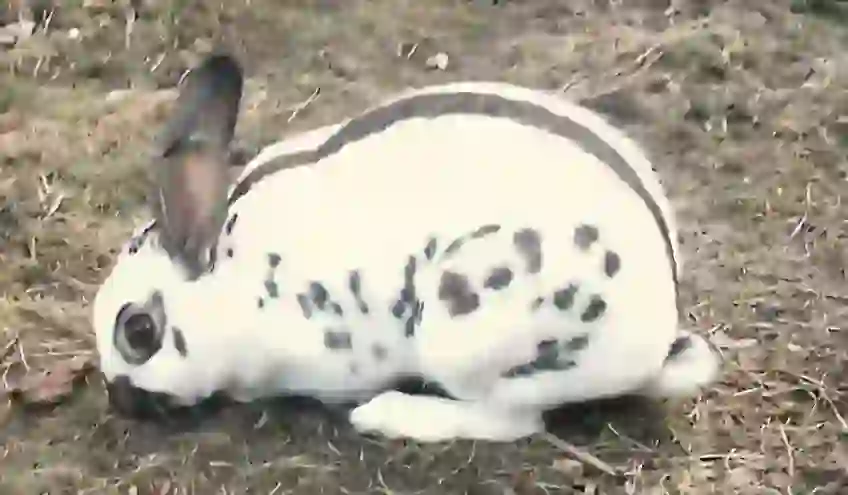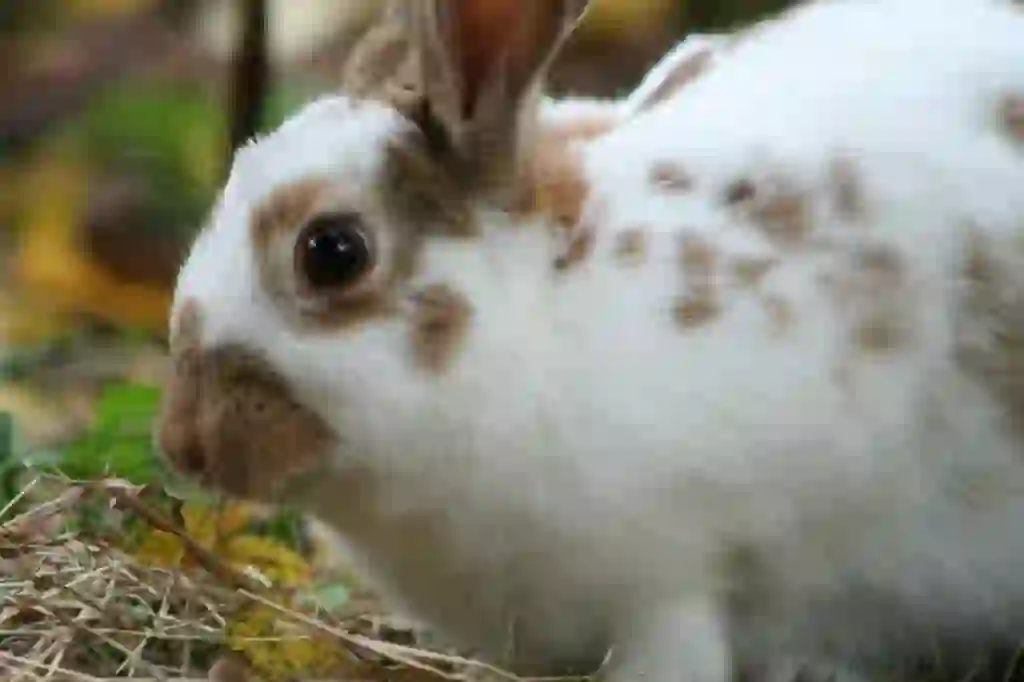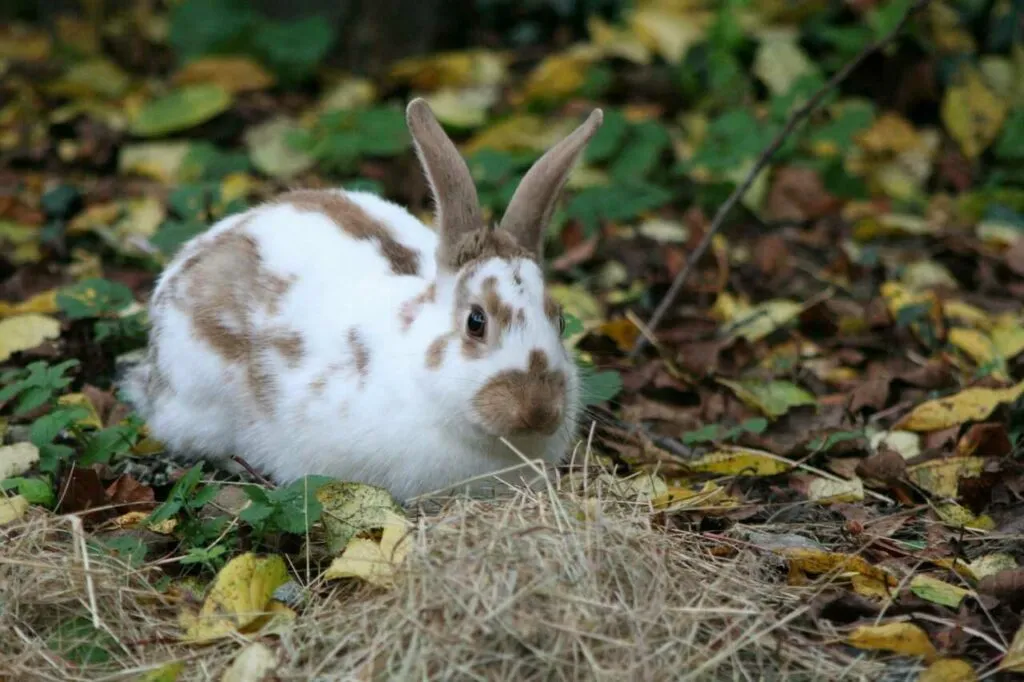
English Spot
English Spot
English Spot
Are you familiar with the rabbit called 'English Spot'? It somewhat resembles the panda rabbit often seen in schools, but it is a different breed. It is quite rare in Japan, so many might be hearing its name for the first time. What exactly is the English Spot rabbit? Let's find out more about it on this page!
English Spot Basic Infomation

Country of origin: United Kingdom
Senior / Male and Female: 6 months and older: 2.27 kg to 3.63 kg
Ideal weight for Males: 2.72 kg, Ideal weight for Females: 3.18 kg
Junior / Male and Female: under 6 months: less than 2.72 kg, minimum weight 1.36 kg
According to the standards of the American Rabbit Breeders Association (ARBA)
The history of the English Spot is very old, and one theory suggests it was developed from the wild spotted species living in the Flanders region (now part of Belgium and France). There are also theories that it originated from the Checkered Giant, but the details are still unclear.
In the 1880s, breeding spread in the UK, and later the breed was introduced to America. By 1918, it was officially recognized.
English Spot Q&A

What is the origin of the name 'English Spot'?
The name 'English Spot' comes from the distinctive spot patterns found on its body, which is a characteristic feature of this breed.

What are the color variations of the English Spot?
English Spot rabbits come in black, blue, chocolate, lilac, gold, gray, and tortoise shell colors. They also have unique blue-gray and brown shades. The English Spot is only available as a short-haired breed.

What does an English Spot look like?
English Spots are known for their 'full arch' body type. They have balanced ears and slender legs, and their coat lies flat against the skin. The most prominent features are their body markings, which have strict rules about their names and ideal placement. The key markings include Ears, Eye Circle, Cheek Spot, Nose Fork or Body of the Butterfly, Wing of Butterfly, Chain Markings, Leg Marking, Herringbone, Spine Marking, Body Markings, Hip Markings, Tail, and Leg Marking. The genetics of these markings are complex; not all offspring will inherit the same markings.

How are the markings of an English Spot determined?
As previously mentioned, the markings of an English Spot are critically important in rabbit shows. These markings are often left to the breeder's knowledge and experience to produce as they do not always conform to an ideal pattern and are unpredictable. It's only after the rabbits are born that breeders can be sure of the marking quality.

Where can you find an English Spot?
In Japan, it's difficult to find English Spots as they are not widely distributed. The breed is more common among specialized breeders, and it might be easier to find them through international breeders if you have connections abroad.

How much does it cost to buy an English Spot?
Due to their rarity in Japan, the exact price of an English Spot is unclear, but they are likely to be expensive. Rabbits that can compete in shows, known as 'show type', are generally more expensive than those considered 'pet type', which are perfectly fine for home life but may not meet strict show standards.

I want to know more about the personality traits of the English Spot!
English Spots are generally mild-mannered but also enjoy playing. Occasionally, they can be very affectionate. Males tend to be more affectionate and have a stronger territorial instinct, sometimes spraying urine as a courtship behavior towards their owners. Females are typically cool, but can become aggressive during estrus or pregnancy to protect their young.

What diseases are English Spots prone to?
English Spots are susceptible to Rabbit Gastrointestinal Syndrome (RGIS), malocclusion, and sore hocks. Rabbits may accidentally ingest their own hair during grooming. If this hair doesn't pass naturally, it can cause appetite loss or complete gastrointestinal blockage. Previously known as 'hairball disease', it is now referred to as RGIS, which can affect all rabbits. Prevention includes providing a diet rich in fiber like timothy hay, ensuring plenty of exercise, avoiding dehydration, and regular brushing by the owner.

What is the lifespan of an English Spot?
English Spots typically live for about 5 to 10 years, which is average for domestic rabbits.

Would you like to become a part of the 'Animalbook.jp'?
Turn your knowledge into Q&A and share it with the world. ※Publication will be activated after purchase. Let's share information together!
English Spot Type of List

- English Spot
Information
Congratulations! You are the first commenter!

Create Your Favorite List!
English Spot
Save the animals you love! Build your own list to quickly revisit your favorites later.

Would you like to leave a comment?
※Please note: This is for the purchase of rights to post comments within the article.
Find Your Favorites!
Our shop offers a unique and attractive selection of goods themed around various animals.
English Spot References
English Spot Introduction of media used

Help Enrich Our Animalbook.jp with Your Media!
We are constantly looking to expand and enrich our Animalbook.jp with amazing photos and videos of animals. If you have any media that you'd like to share, please contribute and help us showcase the beauty and diversity of the animal kingdom. Your submissions will be credited and featured in our encyclopedia, reaching a wide audience of animal lovers.


















